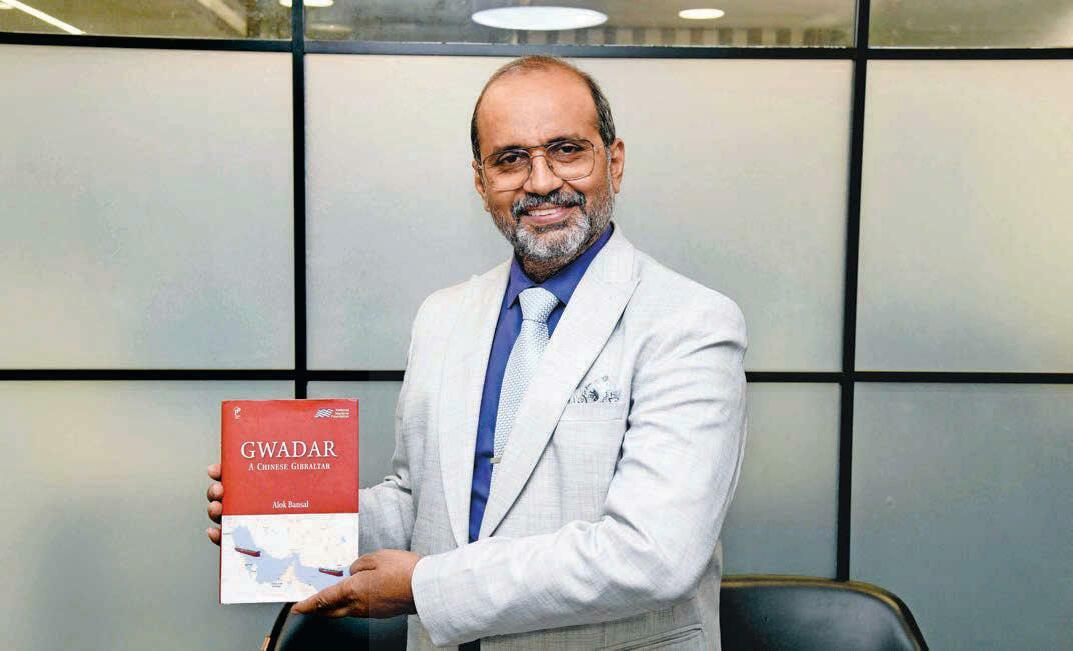
The Gwadar saga stretches back even further.
Pakistan had zeroed in on Gwadar to build a mega seaport in 1964, six years after acquiring it from Oman. The port would have the potential to accommodate super tankers and mother ships. And, that would be vital to attract the transit trade of central Asian nations. Moreover, it would allow Pakistan to keep an eye on the entire traffic to and from the crucial Persian Gulf.
But, work on the port began only in 2001. While the construction is almost complete, various associated projects are still in phases of development, including connectivity by road, rail and an airport. In 2013, the China Overseas Port Holding Company took over the leasing rights of the port and consequently Gwadar became a lynchpin in the ChinaPakistan Economic Corridor (CPEC).
Gwadar takes away the maritime advantage India enjoys over China in the Indian Ocean and embeds China in the northern Arabian Sea, thereby threatening India’s maritime security. Also, it adds to Chinese and Pakistani capability to threaten India’s energy security.
THE WEEK spoke to Captain Bansal on Gwadar. Edited excerpts:
Q Why do you call Gwadar a Chinese Gibraltar?
A Gibraltar controls access to the Mediterranean. This has been a British possession on the southern coast of Spain, another country. But Britain, by its presence in Gibraltar, controls any entry or exit from the Mediterranean towards the Atlantic. Similarly, and to some extent even more, because Gwadar is at the mouth of the Persian Gulf, China can control any traffic that is entering or exiting the Persian Gulf. Here we also need to understand that unlike the Mediterranean, which is open at both ends, the Persian Gulf can only be exited from one point—the Strait of Hormuz—and Gwadar is just outside the strait. So any maritime position there can monitor every vessel that is leaving or entering the Persian Gulf.
This story is from the September 01, 2024 edition of THE WEEK India.
Start your 7-day Magzter GOLD free trial to access thousands of curated premium stories, and 9,000+ magazines and newspapers.
Already a subscriber ? Sign In
This story is from the September 01, 2024 edition of THE WEEK India.
Start your 7-day Magzter GOLD free trial to access thousands of curated premium stories, and 9,000+ magazines and newspapers.
Already a subscriber? Sign In

Forging the future
As the curtain falls on 2024, I take pride in the extraordinary milestones achieved under the leadership of Prime Minister Narendra Modi. This year stands as a testament to the Modi government's resolve to forge a resilient and forward-looking Bharat. From groundbreaking advancements in infrastructure to visionary global initiatives, these efforts resonate deeply with the vision of Viksit Bharat.

Our strange democracy
Abraham Lincoln is lauded as among the very best presidents the US ever had: the statesman par excellence successfully steered the nation through the devastating and perilous years of the American civil war. Not only did Lincoln manage to keep his country united, he also ensured the passage of the 13th amendment to the US constitution, which abolished slavery.

Five years of post-pandemic fashion
It has been five years since we discovered what Covid-19 was, and five years since it disrupted the world forever. The World Health Organization activated their emergency systems on January 1, 2020, and informed the world by January 4, 2020. By the end of that week, they had set guidelines for various countries to follow. Comparable to the Spanish flu of 1918, more than 7 million people have died of Covid according to official data. Unofficially, no one has an idea. WHO has just this week asked China to provide critical data to understand the virus's origins as a “moral and scientific imperative”.

Community spirit
Rhythm of Dammam opens a window to the world of African-origin Siddis of Uttara Kannada

'Breaking' down a scandal
Society Girl is not just a case study of a high-profile death in Pakistan but also a stark commentary on media trials

Progress card
Jasmine Shah's book tells you what the AAP has achieved in Delhi in the last 10 years

SENSE IN NONSENSE
In his latest book of poetry, Ruskin Bond is at his funniest

Get ready for Trump bump
The ‘butterfly effect’ is a beautiful, mysterious metaphor of the planet’s interconnectedness.

QUIET FLOWS THE FAITH
The melding of an ancient amorphous faith and the latest science; of an antique tradition and new practices; ways of life older than memory and new expressions is happening at Prayagraj in Uttar Pradesh.

Trash to treasure
How a weed-choked Dal Lake spurred Maninder Singh's journey to become a waste management visionary